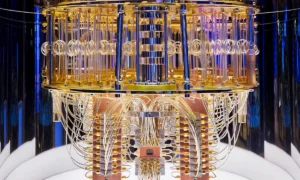Introduction:
The landscape of artificial intelligence (AI) has undergone a profound transformation in recent years, with breakthroughs capturing the public’s imagination. However, to truly grasp the evolution of AI, it is essential to journey back before the turn of the millennium. In this exploration, we delve into the pre-2000 era, examining the roots, challenges, and genuine accomplishments that laid the foundation for the AI landscape we know today.
The Genesis of Artificial Intelligence:
Before the buzzwords like “machine learning” and “neural networks” became part of everyday discourse, the concept of artificial intelligence had its humble beginnings. The 1950s witnessed the birth of AI, as pioneers such as Alan Turing and Marvin Minsky laid the groundwork for a new frontier in computing. However, the computational power of the time limited the practical application of these early ideas.
Challenges and Setbacks:
As the years progressed, the AI community faced significant challenges. Limited computing resources, insufficient data, and the absence of sophisticated algorithms hindered progress. The overly optimistic expectations of the 1960s, known as the “AI winter,” reflected the disappointment stemming from unmet aspirations. Funding dwindled, and AI entered a period of reduced enthusiasm.
Expert Systems and Rule-Based AI:
Despite setbacks, the 1970s and 1980s witnessed a resurgence in interest with the development of expert systems and rule-based AI. These systems, designed to mimic human decision-making processes, found applications in fields like medicine and finance. However, the rigid nature of rule-based systems and the challenges in scaling them limited their effectiveness.
The Emergence of Machine Learning:
The pre-2000 era also saw the emergence of machine learning, a critical aspect of contemporary AI. Researchers began exploring algorithms that could learn from data and adapt without explicit programming. The shift from rule-based systems to learning algorithms marked a pivotal moment, laying the groundwork for future advancements.
Natural Language Processing:
Understanding human language has always been a cornerstone of AI. Before 2000, natural language processing (NLP) started gaining traction, with researchers striving to develop systems capable of comprehending and generating human-like language. While progress was slow, these early endeavors paved the way for the sophisticated language models we have today.
The Turning Point: Late 1990s:
As the 1990s unfolded, a confluence of factors sparked renewed interest in AI. Increased computing power, the growth of the internet, and the accumulation of vast datasets facilitated more ambitious AI endeavors. The late 1990s saw breakthroughs in areas like chess-playing programs and speech recognition, capturing the public’s attention and reigniting optimism.
Transitions to Modern AI:
The period before 2000 set the stage for the transformative changes that followed. With the groundwork laid in the earlier decades, the 21st century witnessed a rapid acceleration in AI advancements. Machine learning algorithms became more sophisticated, and neural networks, inspired by the human brain, emerged as a powerful paradigm.
The Road Ahead: Realities and Challenges:
While the progress of AI has been remarkable, it is crucial to acknowledge the realities and challenges that persist. Ethical concerns, biases in algorithms, and the responsible use of AI technologies require ongoing attention. As AI becomes increasingly integrated into our lives, understanding its limitations and potential risks is paramount.
Conclusion:
The journey of artificial intelligence before 2000 illuminates the persistence, resilience, and ingenuity of the researchers and pioneers who laid the foundation for the AI landscape we experience today. Beyond the hype, the pre-2000 era encapsulates a narrative of setbacks, triumphs, and the unyielding pursuit of understanding and replicating human intelligence. As we navigate the future of AI, acknowledging its historical roots allows us to appreciate the progress made and approach the future with a nuanced understanding of the possibilities and challenges that lie ahead.



































